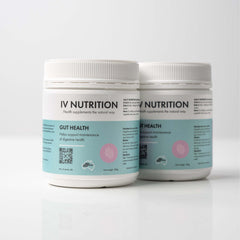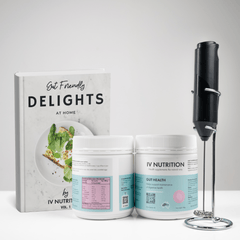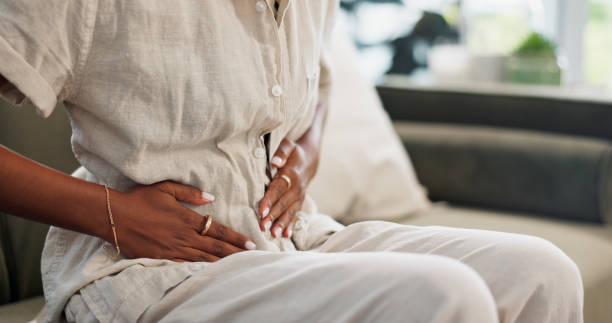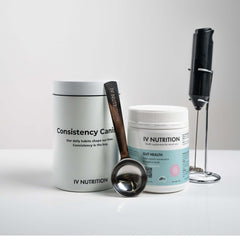Constipation can strike at the worst possible moments—before a meeting, a date, or just when you want to enjoy a normal day without feeling like you swallowed a brick. The good news? You don’t always need a full-blown lifestyle overhaul or a pharmacy aisle sweep to find fast relief. This guide is your 30-minute game plan to get things moving—backed by science, seasoned with a little wit, and focused on real, practical strategies that actually work.
Let’s break down how to go from bloated and blocked to light and relieved—in just half an hour.
Understanding the Science Behind “Why You’re Not Going”
Before we dive into the quick fixes, let’s address what’s happening inside your body. Constipation isn’t just “not pooping.” It’s your body’s signal that something—hydration, diet, movement, or stress—is out of sync.
According to the National Institute of Diabetes and Digestive and Kidney Diseases (NIDDK), constipation is generally characterized by:
-
Fewer than 3 bowel movements per week
-
Hard, dry, or lumpy stools
-
Difficulty or straining during bowel movements
-
A sense of incomplete evacuation
If this sounds familiar, let’s not sit on the problem (pun intended). Let’s fix it—fast.
30-Minute Relief Plan: What Actually Works
1. Drink a Large Glass of Warm Water (5 Minutes)
Start simple. A big glass of warm (not hot) water can do wonders. The warmth helps relax the digestive tract while hydrating your system—key for softening stool.
💡 Pro tip: Add a splash of lemon juice. It may stimulate the production of bile and kickstart digestion.
2. Try the “Iliac Crest Massage” (5–7 Minutes)
Yes, massage. Specifically, a self-abdominal massage that targets the colon. Use your fingers to apply gentle pressure in a clockwise direction starting at your lower right abdomen.
Research in the Journal of Bodywork and Movement Therapies shows abdominal massage can improve bowel motility and reduce symptoms of constipation.
3. Activate the Squat Position (2 Minutes)
No, don’t run for the gym. We’re talking about how you sit on the toilet.
Grab a stool (not that kind) and raise your feet while sitting. This puts you in a more natural squat-like position, which straightens the rectal canal and makes elimination easier.
📚 Clinical support: According to studies like this one in Digestive Diseases and Sciences, squatting can reduce strain and improve bowel evacuation.
4. Light Movement – A Brisk Walk or March in Place (5–10 Minutes)
You don’t need a full cardio class—just get your body moving. Movement stimulates the muscles of your intestines (a process called peristalsis), which helps move stool along.
-
March in place
-
Do a few jumping jacks
-
Walk briskly up and down the hallway
Bonus: It relieves gas too.
5. Sip a Warm Cup of Herbal Tea (Optional but Relaxing, 5 Minutes)
Chamomile, ginger, or peppermint tea can soothe the stomach and help promote mild digestion stimulation.
Herbal teas may work partially through the gastrocolic reflex—the body’s natural response to consuming warm liquids.
6. Stimulate the Gastrocolic Reflex with Food or Drink (Within 30 Minutes)
Eating stimulates the digestive system. Even a light snack can trigger the gastrocolic reflex, which can prompt the urge to go.
Foods that help include:
-
A banana (contains magnesium and fiber)
-
A few dried prunes
-
A spoon of chia seeds soaked in water
Bonus: Add a Prebiotic Fiber Supplement to Your Routine (Long-Term + Bonus Support Today)
While the steps above focus on quick relief, long-term digestive health needs backup—this is where prebiotic fiber becomes your gut’s new best friend.
Why Prebiotic Fiber is the MVP for Regularity
What Are Prebiotics, Anyway?
Prebiotics are non-digestible fibers that feed the good bacteria in your gut. Unlike laxatives, they work with your body, supporting a natural rhythm instead of forcing it.
They improve:
-
Bowel regularity
-
Stool consistency
-
Gut microbiota balance
One 2021 meta-analysis published in Nutrients found that prebiotic supplementation significantly improved stool frequency and consistency without side effects often seen with laxatives.
Spotlight on IV Nutrition’s Virgin Sugarcane Prebiotic Fiber
So what makes IV Nutrition’s Prebiotic Sugarcane Fiber worth shouting from the (toilet-free) rooftops?
-
Derived from virgin sugarcane, it’s natural, clean, and easy on the stomach.
-
It feeds your beneficial gut bacteria without gas or bloating.
-
It’s tasteless, odorless, and dissolves effortlessly in water or smoothies.
-
It doesn’t contain synthetic additives or artificial sweeteners—just pure, functional fiber.
Real Talk: This Stuff Works
Users consistently report smoother digestion, less bloating, and more regularity within days—not weeks.
And here’s the best part:
🎁 Try it FREE! Get your first tub 100% off when you subscribe using this link:
👉 Click here to claim your offer
Go from sluggish to smooth—naturally.
Foods That May Help in 30 Minutes (or Close)
If you’re near a kitchen and need quick relief, try these:
-
Kiwi: 2 kiwis a day has been shown to help with mild constipation in a study published in the Asia Pacific Journal of Clinical Nutrition.
-
Prunes: They’re the OG natural laxative, thanks to sorbitol.
-
Coffee (maybe): For some people, it stimulates the bowels—just be cautious as it can dehydrate you.
What to Avoid if You're Trying to Go in 30 Minutes
These can make things worse, fast:
-
Dairy (for some people)
-
Red meat (slow to digest)
-
Too much fiber all at once (yes, it can bloat you)
-
Holding it in (just go!)
The Mind-Gut Connection: Yes, It’s a Thing
Stress and anxiety can slow your gut. When your body is in “fight or flight,” digestion is the last priority. Take 5 minutes to breathe deeply or do a short guided meditation.
Apps like Headspace or Calm can help—and it beats doomscrolling on the toilet.
Hydration Hack: The Constipation Cocktail (DIY)
Need a home remedy that’s gentle but effective? Try this simple mix:
-
1 cup warm water
-
1 tbsp lemon juice
-
1 tsp honey
-
A pinch of sea salt
-
(Optional: a teaspoon of chia seeds soaked for 15 minutes)
Sip slowly. It combines hydration, electrolytes, and mild stimulation for the bowels.
Quick-Relief Summary Checklist
⏱️ 30-Minute Plan to Go:
✅ Warm water with lemon
✅ Abdominal massage
✅ Squat position
✅ Light movement
✅ Snack or tea to trigger gastrocolic reflex
✅ Deep breathing
✅ Optional: Prebiotic fiber for long-term support
Constipation Myths to Flush Away
❌ Myth 1: You Should Poop Every Day
Nope. Everyone’s normal is different. If you feel fine and go every other day, that’s okay.
❌ Myth 2: Coffee Is a Reliable Fix
It works for some, but not all. And it can dehydrate you. It’s not a cure.
❌ Myth 3: More Fiber = Better
Only if balanced with enough water. Otherwise, it can backfire—literally.
When to See a Doctor
If you experience:
-
Blood in your stool
-
Sudden, severe pain
-
Constipation lasting more than 2 weeks
-
Unexplained weight loss
-
Nausea or vomiting
Please don’t wait. Reach out to a medical professional. Constipation can sometimes signal underlying conditions like IBS-C, thyroid issues, or even bowel obstruction.
Final Thoughts: You’ve Got This
Constipation may be common, but it doesn’t have to be your norm. In just 30 minutes, with the right techniques and a little body awareness, you can find relief—and more importantly, set yourself up for better gut health moving forward.
Start with movement, massage, hydration—and don’t forget your long-term ally: prebiotic fiber like IV Nutrition’s Virgin Sugarcane Fiber.
🎁 Remember, you can get your first tub free right here:
👉 Claim Your Offer
Here’s to smoother days (and bowel movements) ahead.
FAQs
1. Can prebiotic fiber work immediately?
Prebiotic fiber works best over time. However, some people notice improvements in bloating and regularity within just a couple of days.
2. What’s the fastest natural remedy for constipation?
A combination of warm water, movement, and abdominal massage can offer relief in as little as 30 minutes.
3. How often should I take prebiotic fiber?
Daily! Consistency helps maintain a healthy gut microbiome and promotes regular bowel movements.
4. Can stress really cause constipation?
Yes—high stress increases cortisol, which can disrupt gut motility. Relaxation techniques help more than you'd think.
5. Is it bad to strain on the toilet?
Absolutely. Straining can lead to hemorrhoids and other complications. Use proper posture and relax.





